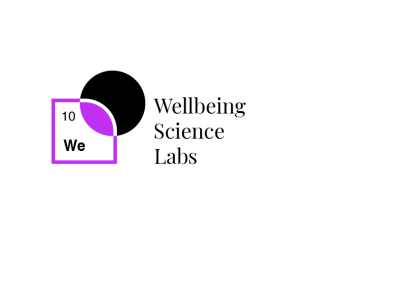Digital detox is defined as occasionally disconnecting from information technology (IT) and following strategies to limit the use of smart devices, televisions, and social media. Being digitally active and having a social media presence have become daily routines for most people. Adults in the U.S. spend nearly 11 hours daily on social media interactions, increasing their susceptibility to falling prey to stress, irregular sleep, mental health issues, work-life imbalance, and social comparison.
People become over-invested in social media comparison, feeding negative feelings of inadequacy. Taking a break from technology helps foster a sense of self-acceptance and confidence as constant comparisons are moderated. In other words, a digital detox is an eye-opening experience of what one has to offer to the world.
Unlock a new sense of clarity and creativity now! Discover the immediate relief from stress and the potential for deeper human connections through an effective digital detox.
Benefits of a digital detox
The burdens of digital activity form a chain reaction of stress, where device use before bedtime hinders sleep quality, gradually affecting mental health and making it difficult to separate professional time from personal time. Work-life imbalance is a serious issue for those who fear missing out (FOMO). Going on a digital detox every once in a while can rewire your sleep schedule back to normal once you get used to putting your device away for a while and set an automatic boundary between professional time and personal time.
The drawbacks of digital activity can easily turn it into an addiction that requires regular breaks. Therefore, besides the advantages mentioned above, digital detox has several other benefits, including the following:
Improved mental health and reduced stress
Frequent notifications, emails, and social media updates build an ongoing feeling of urgency, giving the impression that people are obliged to be constantly active and available. This obligation triggers stress and anxiety, as the mind does not get the opportunity to fully relax. Digital detox allows you to disconnect from stress-inducing factors, enabling you to do activities that cultivate happiness and tranquility, such as meditating, reading, swimming, camping, and many more.
Enhanced focus, productivity, and creativity
Technology surely enhances productivity and creativity in certain aspects, yet it can be distracting in a way that delays important tasks. Digital detox re-guides focus by removing constant notifications and distractions. Eliminating these distractions fosters better productivity and more creativity.
Strengthened relationships and improved social interactions
Technology facilitates reaching out to friends and family. Still, it also creates a sense of alienation when this connection is only established through devices all the time. A digital detox can have a positive impact on your relationships. Connecting with your loved ones in person fosters stronger connections and more genuine relationships. Spending your digital detox time with friends and family in natural settings fosters tranquility and connection.
Increased mindfulness and self-awareness
Digital detox cultivates better self-awareness and overall awareness of what is happening in the surroundings. Focusing on inner thoughts and feelings is easier when the train of thought is not constantly interrupted by notifications and trivial distractions. Digital detox also creates a healthy environment to practice mindfulness and meditation to reduce stress and enhance clarity.
Initiating a digital detox
To kick off your digital detox, start by figuring out why you’re doing it and setting some realistic goals. Once you do, you can create distinct limitations. There are several tips that you can follow to initiate your digital detox journey, including the following:
Set clear goals and intentions
Start small, like not using your phone at the dinner table or taking phone-free lunch breaks, and then progress by committing to a phone-free weekend or avoiding social media apps for a week or two. Tailor your choices to your work and study life by setting time limits on apps and see how it goes. Inform your friends and family about your digital detox plans, explaining why you might not be responsive, and if you have a strong attachment to your phone, seek encouragement and assistance from them – don’t hesitate to request support.
Create a digital detox plan and schedule
A digital detox plan might involve scheduling specific periods for disconnecting, deciding which devices to disengage from, or planning activities to occupy your newfound leisure time. Choose a technology detox that suits you, like a social media detox if it is time-consuming and affecting your self-esteem, or remove news and game apps if they are addictive. Opt for a mindful tech detox; even small steps like disabling comments on Instagram count go a long way.
Gradually reduce screen time and digital consumption
Moderating digital consumption can be done by making slight, gradual changes to your screen time routine. This step-by-step process can be done as follows:
- Disable unnecessary app notifications, such as news, Instagram, Twitter, and Facebook.
- Consider turning off all instant messaging app notifications and keeping your phone in another room while working or studying to avoid constant distractions.
- Wait before replying to texts and comments, set a 30-minute time slot for replies or wait for the weekend.
- Agree on response times with friends, and use a single 30-minute block for social media, leaving the rest of the day for non-digital activities.
- Once you’ve achieved your initial tech detox goals, try having one tech-free day each week and gradually extend this to a weekend or even a full week.
Utilize digital tools to aid in the detox process
Some apps can help with digital detoxification, including the following:
- ‘Space’ helps manage screen time, set usage goals and limits, and track progress.
- ‘Unpluq’ reduces screen time by blocking chosen distracting apps with barriers that require intentional actions to unlock.
- ‘Insight Timer’ is useful for mindfulness, providing numerous guided meditation sessions, positive affirmations, and live yoga broadcasts.
- ‘Spike’ controls constantly and unnecessarily checking your email by streamlining your inbox, consolidating multiple email accounts, managing notifications, and facilitating unsubscribing from promotional emails.
Digital detox activities
Breaking habits, especially the digital ones with attention-grabbing features, can be tricky. If you plan your digital detox correctly, stepping away from your digital identity and into the real world has a better chance of success. There are many things to do on a digital detox, including the following:
Explore outdoor and nature-based activities
Outdoor activities can help you disconnect from digital screens by being fully immersed in the natural environment. Nature-based activities include swimming, birdwatching, hiking, rock climbing, biking, journaling, and gardening. Joining local outdoor programs, nature clubs, or guided tours allows you to learn from experts and connect with like-minded individuals in outdoor exploration and screen detox. Making this a daily or weekly routine promotes digital detox and a continuous connection with nature.
Engage in hobbies and creative pursuits
Going on a technology detox allows you to rediscover neglected hobbies, delve into literature or embrace artistic pursuits. These hobbies can spark your passion and creativity, stimulate your imagination, as well as foster tranquility and satisfaction. Therefore, switching from digital screens to reading, painting, writing, or any other creative hobby allows you to rediscover life from new perspectives and enhances your well-being.
Practice mindfulness, meditation, and relaxation techniques
Practicing mindfulness is a refreshing tech detox that allows individuals to disconnect from technology and restore balance by reconnecting with nature. Practices like guided nature walks, meditation in natural settings, or outdoor journaling quiet the mind, increase sensory awareness, and foster inner peace and presence. Outdoor time can be used for mindfulness by immersing your senses in nature to enhance the digital detoxification experience and deepen your connection to nature.
Build face-to-face connections and socializing
It is common to be overinvested in social media rather than dedicating quality time to be physically present with friends and family. Genuine connections are maintained through meaningful conversations, shared activities, and attention to subtle hints in face-to-face encounters, such as expressions and body language. This approach enriches connections and counters the feelings of isolation caused by digital socialization.
In conclusion
The drawbacks of digital activity are your wake-up call to step back from screens and reconnect with yourself and the world around you. It does not necessarily require the full elimination of technology. Rather, it sets limits on your device usage and encourages you to take longer breaks to enjoy better concentration, less stress, and stronger relationships. These tech detoxes can be tailored to fit your needs, creating a healthier balance between technology and life.
If you would like to see more resources on digital identity, check out the Wellbeing Science Labs. The lab uses the research of the Institute for Life Management Science to produce courses, certifications, podcasts, videos, and other tools. Visit the Wellbeing Science Labs today.
Photo by rawpixel.com on Freepik



